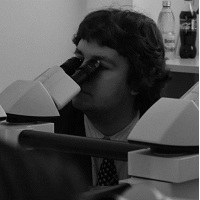Health Sciences before, during and after the COVID-19 Pandemic
A special issue of European Journal of Investigation in Health, Psychology and Education (ISSN 2254-9625).
Deadline for manuscript submissions: closed (30 April 2022) | Viewed by 24088
Special Issue Editors
2. Center of Hematology and Bone Marrow Transplantation, Fundeni Clinical Institute, 258 Fundeni Road, 022328 Bucharest, Romania
Interests: cancer diagnostics; haematology; oncology; internal medicine; natural products; myeloproliferative neoplasms; lymphoproliferative neoplasms; diabetes; obesity; oxidative stress; antioxidants; inflammation
2. Clinic of Hematology, Filantropia City Hospital, 200143 Craiova, Romania
Interests: hematology; internal medicine; pathophysiology; modern methods of teaching
Special Issues, Collections and Topics in MDPI journals
Special Issue Information
Dear Colleagues,
During the COVID-19 pandemic, the teaching of health sciences (i.e., medicine, dentistry, pharmacy, midwifery, and nursing) has changed dramatically. Since face-to-face learning was cancelled in the countries severely affected by the COVID-19 pandemic, most universities implemented online methods of teaching–learning–evaluation to deliver educational content to undergraduate and graduate students. However, especially during a time when there is a great need of well-trained personnel to join the healthcare workforce, the absence of clinical experience might negatively impact on the future prospects of students in the various health science fields.
Apart from the students enrolled in the study of health sciences, the SARS-CoV-2 pandemic has drastically changed the practice of medicine in hospitals worldwide. Some patients suffered directly from COVID-19, whereas others experienced the negative impact of the pandemic on the management of their chronic disorders.
This Special Issue aims to explore the theme of “Health Sciences Before, During and After the COVID-19 Pandemic”. Original research articles, short communications, narrative or systematic reviews, meta-analyses, and other submission types dealing with all aspects of health science education during the COVID-19 pandemic are encouraged. In addition, we welcome manuscripts focused on pre-pandemic health science education, as well as future prospects regarding the evolution of this field. Moreover, we welcome the submission of interdisciplinary research (original articles, reviews, case reports, etc., including non-clinical investigations) focused on clinical medicine both before and during the SARS-CoV-2 pandemic. Papers related to clinical medicine but not directly related to the SARS-CoV-2 pandemic are also accepted.
Dr. Mihnea-Alexandru Găman
Prof. Dr. Amelia Maria Găman
Guest Editors
Manuscript Submission Information
Manuscripts should be submitted online at www.mdpi.com by registering and logging in to this website. Once you are registered, click here to go to the submission form. Manuscripts can be submitted until the deadline. All submissions that pass pre-check are peer-reviewed. Accepted papers will be published continuously in the journal (as soon as accepted) and will be listed together on the special issue website. Research articles, review articles as well as short communications are invited. For planned papers, a title and short abstract (about 100 words) can be sent to the Editorial Office for announcement on this website.
Submitted manuscripts should not have been published previously, nor be under consideration for publication elsewhere (except conference proceedings papers). All manuscripts are thoroughly refereed through a single-blind peer-review process. A guide for authors and other relevant information for submission of manuscripts is available on the Instructions for Authors page. European Journal of Investigation in Health, Psychology and Education is an international peer-reviewed open access monthly journal published by MDPI.
Please visit the Instructions for Authors page before submitting a manuscript. The Article Processing Charge (APC) for publication in this open access journal is 1400 CHF (Swiss Francs). Submitted papers should be well formatted and use good English. Authors may use MDPI's English editing service prior to publication or during author revisions.
Keywords
- medical teaching
- medical education
- clinical medicine
- burnout
- anxiety
- depression
- modern methods of teaching
- COVID-19
- SARS-CoV-2
- pandemic







